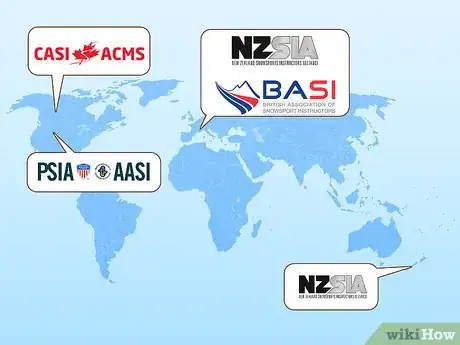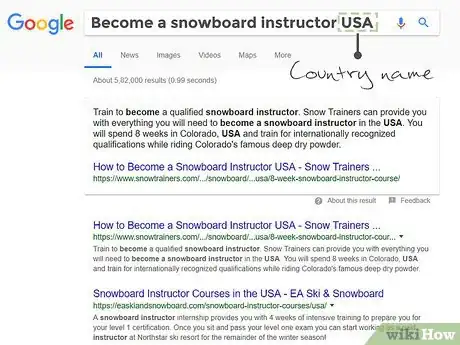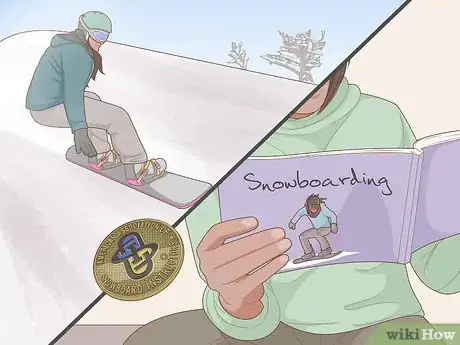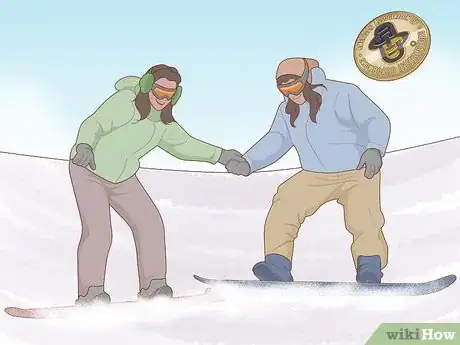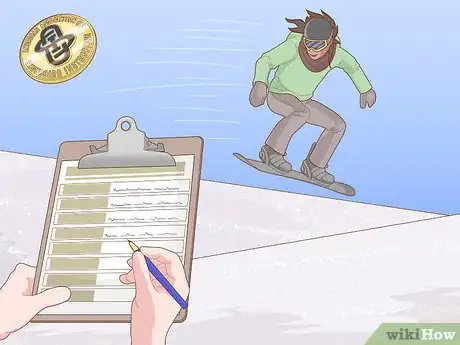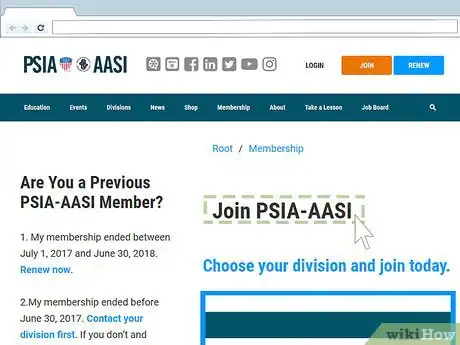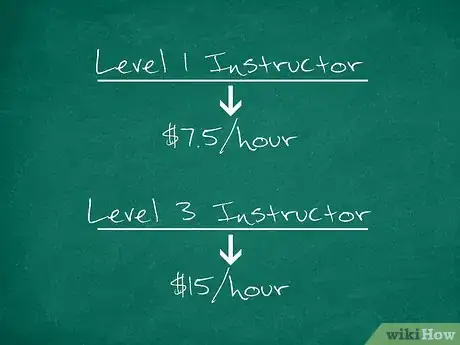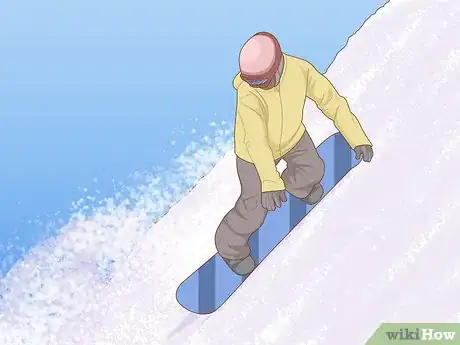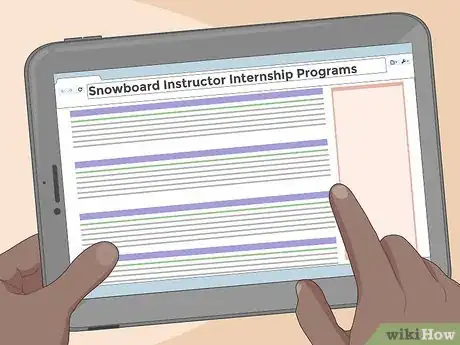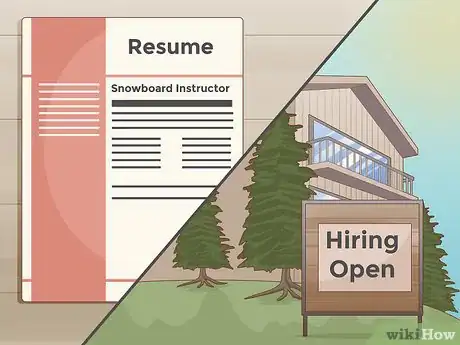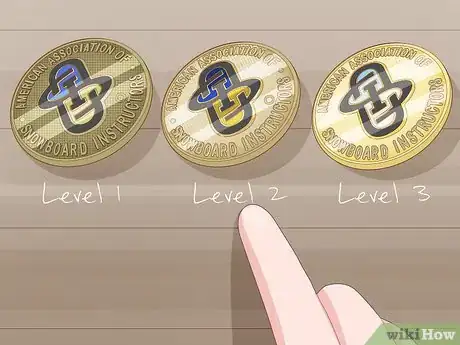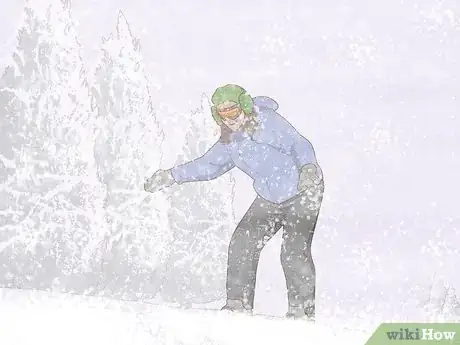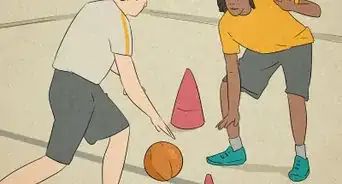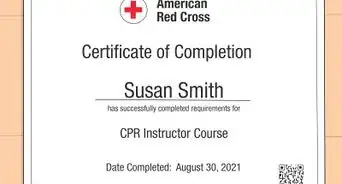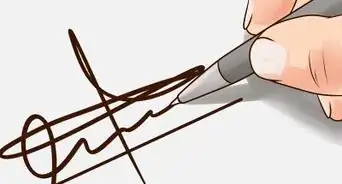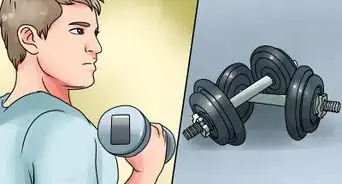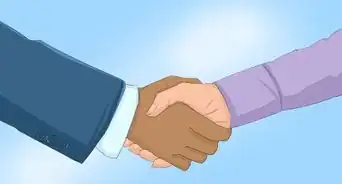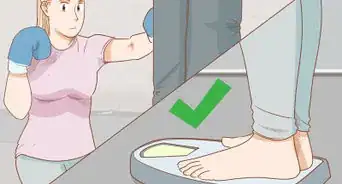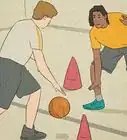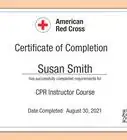This article was co-authored by Kent Bry. Kent Bry is a certified ski and snowboarding instructor and the director of Adventure Ski & Snowboard, a school based in the San Diego, California metro area. With over 50 years of skiing and snowboarding performance and instruction experience, Kent is certified by the Professional Ski Instructors of America (PSIA). Adventure Ski & Snowboard is a member of the PSIA and the American Association of Snowboard Instructors (AASI). Kent holds a BS in Recreational Therapy from San Diego State University and is also a California-registered recreational therapist.
This article has been viewed 23,879 times.
If you have a love for snowboarding, becoming an instructor offers a great way to spend time teaching others about something you love, while also helping you become a better snowboarder. Additionally, you can get to know lots of interesting people, and save money on the cost of gear and lift tickets. While it may sound like a dream come true, becoming an instructor takes time, effort, and a big financial investment initially. If you want to become a snowboard instructor, take the time to learn about finding a school and looking for a job.
Steps
Finding a School
-
1Find the relevant training organizations. There are several different governing bodies around the world. In the USA, the governing body is The Professional Ski Instructors of America - American Association of Snowboard Instructors (PSIA-AASI).[1]
- In Canada, the governing body is known as The Canadian Association of Snowboard Instructors (CASI). Note that Japan also uses CASI as their governing body.
- In New Zealand, the governing body is called Snow Board Instruction of New Zealand (SBINZ).
- Switzerland acknowledges two governing bodies. The first is The British Association of Snowsport Instructors (BASI), as well as The New Zealand Snow Sports Instructors Alliance (NZSIA).
-
2Search the internet for courses. There are many different training courses around the world. Doing an internet search using the terms “Become a snowboard instructor” plus the name of the country will provide you with a list of various training courses. Courses can range anywhere from a few hundred to several thousand dollars depending on where the course is being held and the accommodations that are included in the course. However, if you look hard enough, you might be able to find paid internships that act as a certification course as well. You will have to pay a program fee, but you will earn money during the course, which could help offset your costs.[2]
- It would be wise to take a course in the country where you plan to be an instructor. That way, you will be sure that your certification is valid where you plan to teach.
- Before signing up for a school, be sure to check that the school can certify you according to the governing body of your country, or the country where you plan to teach. If this information isn’t readily available on the website, give them a call and ask them directly.
- If you live close to a ski resort, you can also check to see if they offer any instructor training. This may save you a lot of money in travel and accommodation costs.
Advertisement -
3Earn your Level 1 certification. To earn your Level 1 certification in the United States, you will need to demonstrate your ability to snowboard, as well as your understanding of AASI’s teaching methods. You will need to practice your snowboarding skills, but you will also need to spend time learning about AASI’s mission and values.
- One of the most important things to learn about is safety on the slopes. You will need to understand, for example, how to keep your students safe. You will also need to learn about how weather conditions can affect students, for example.
- You can learn much of what you will need for the Level 1 certification at a snowboard instructor course, but it doesn’t hurt to do some extra studying on your own.
-
4Earn your Level 2 certification. In order to earn your Level 2 certification, you will need to have spent some time working as a Level 1 instructor. By this time, you will have improved your teaching and snowboarding skills, and will now be ready to teach more difficult skills to more advanced snowboarders.
- You will also be qualified to teach snowboarders how to deal with more challenging conditions at this point.
- There is a three day examination process that a snowboard instructor must pass in order to reach Level 3.
-
5Earn your Level 3 certification. If you wish, you can earn your Level 3 certification and become a fully certified instructor. In order to reach this level, you will need to participate in a four day certification course, and then successfully pass the exam at the end.
- Only about 10-20% of instructors pass this exam on the first attempt.
- Though it is challenging, becoming a Level 3 instructor can open up a lot of professional doors.
Getting a Job
-
1Join your country’s professional association. If you are in the US, you should seriously consider joining the PSIA-AASI. Even if you are not yet a certified instructor, you are still allowed to join. Once you earn your certification, you can become a certified PSIA-AASI instructor.
- Joining will give you access to a network of other instructors.
- As a member of your country’s professional association, you will be able to show potential employers that you are a dedicated and professional instructor.
-
2Be aware of the pay scale. If you are an inexperienced, Level 1 instructor, you can probably expect to make about $7.50 per hour. If you are an experienced, Level 3 instructor you may make as much as $15 per hour. One-on-one lessons will usually be the most lucrative, and you may earn additional money from tips.[3]
- Some resorts only pay you for the hours actually spent teaching, while others may pay you for your time spent teaching as well as doing other things such as helping set up and maintain the resort.
- Keep in mind that instructing is a seasonal job. You won’t be able to be a snowboard instructor the whole year round.
- Many instructors have a second job at the resort that they do when they aren’t teaching. This helps earn a bit of extra money.
-
3Improve your skills. Even if you think you are a pro at snowboarding, there is always more to learn. As an instructor, you will need to be able to help others understand the movements and techniques involved in snowboarding. Thus, while improving your skills, you can focus more heavily on understanding the movements involved in snowboarding rather than just learning how to do cool tricks.
- Look for an instructor that is at least a Level 3 instructor. Explain to them that you are on your way to becoming a snowboard instructor yourself and that you want to learn how to be a good instructor while also improving your own skills.
-
4Consider doing an internship. Finding a job as a snowboard instructor can be challenging, especially if you don’t have any previous work experience. If you can afford to do so, consider looking for an internship where you will work as instructor to gain some experience.[4]
- Some training courses (that you have to pay for) include an internship as part of the course. This will allow you to earn your certification and gain work experience at the same time.
-
5Apply for jobs. Most ski and snowboard resorts do their hiring in the summer months, not a few weeks before the season begins. Don’t put off your applications, as many resorts have a cutoff date and won’t even look at your application if you don’t submit it on time.
- Be aware that if you only have a Level 1 certification, it may be next to impossible to find a job as resorts prefer to hire people with at least Level 2 certification. However, you may be able to find a resort that will let you work while also working towards your Level 2 certification.
- Being a member of your country’s governing body can also be helpful for finding a job.
- Try doing an internet search for “snowboard instructor jobs” and you will find several websites where resorts post their job openings.
Understanding the Requirements
-
1Think about what level of certification you would like to achieve. For snowboard instructors in the US, there are 3 levels of certification. The lowest level is Level 1, and the highest level is the Level 3 certification. Knowing what level you would ultimately like to achieve can help you plan out your future accordingly.[5]
- For example, a Level 1 instructor is only able to teach beginner and novice snowboarders, and in some cases, may only be able to teach on artificial slopes. On the other hand, a Level 3 instructor can instruct on very technical skills and can also train new snowboard instructors.
-
2Maintain your certification. If you are certified with the PSIA-AASI, you will need to work to maintain your certification through continuing education credits. You will need to earn at least 12 credits (approximately 12 hours) of continuing education every two years in order to keep your certification.
- You may also be able to earn these credits in more specific areas. For example, if you enjoy teaching children, then you can spend time learning about how to teach children and why it is different than teaching adults.
-
3Become aware of the reality of being an instructor. If you love snowboarding, you may think that being an instructor would be a dream come true. In many ways, this is correct. You will get to snowboard as much as you like during your free time, and you will get paid to teach something you love. However, being a snowboard instructor comes with its own drawbacks, so take time to weigh the advantages and disadvantages of this career choice.
- For example, most people find their first job teaching children. As a snowboard instructor, this might be more difficult because most children start out skiing so there is less demand.
- Sometimes the snow will be absolutely perfect, but you won’t get to take advantage of it because you’ll be teaching.
- Sometimes you’ll have to teach in terrible weather.
- Initially, you may have to spend a lot of money in order to become an instructor.
Expert Q&A
-
QuestionWhat qualifications do you need to be a snowboard instructor?
 Kent BryKent Bry is a certified ski and snowboarding instructor and the director of Adventure Ski & Snowboard, a school based in the San Diego, California metro area. With over 50 years of skiing and snowboarding performance and instruction experience, Kent is certified by the Professional Ski Instructors of America (PSIA). Adventure Ski & Snowboard is a member of the PSIA and the American Association of Snowboard Instructors (AASI). Kent holds a BS in Recreational Therapy from San Diego State University and is also a California-registered recreational therapist.
Kent BryKent Bry is a certified ski and snowboarding instructor and the director of Adventure Ski & Snowboard, a school based in the San Diego, California metro area. With over 50 years of skiing and snowboarding performance and instruction experience, Kent is certified by the Professional Ski Instructors of America (PSIA). Adventure Ski & Snowboard is a member of the PSIA and the American Association of Snowboard Instructors (AASI). Kent holds a BS in Recreational Therapy from San Diego State University and is also a California-registered recreational therapist.
Certified Ski & Snowboarding Instructor You don’t have to be an expert snowboarder to be a good teacher, but you do have to be able to do it well enough so that you can explain it to others. If you are just starting out as an instructor, the focus will be on your ability to teach. However, improving your snowboarding ability will also be beneficial for your teaching. In the world of snowboard instruction, communication, empathy, and patience are all more important than being an expert snowboarder.
You don’t have to be an expert snowboarder to be a good teacher, but you do have to be able to do it well enough so that you can explain it to others. If you are just starting out as an instructor, the focus will be on your ability to teach. However, improving your snowboarding ability will also be beneficial for your teaching. In the world of snowboard instruction, communication, empathy, and patience are all more important than being an expert snowboarder.
Warnings
- Be sure that you have the money to pay for your certifications. Although you will hopefully earn that money back, people don’t become instructors to get rich, so it is important to know what you can afford to pay for.⧼thumbs_response⧽
References
- ↑ http://www.easkiandsnowboard.com/faqs/certifications/
- ↑ http://www.goabroad.com/providers/ea-ski-snowboard/programs/paid-instructor-internships-%13-ski-and-snowboard-101356
- ↑ http://www.jobmonkey.com/ski/instructor_issues/
- ↑ http://www.easkiandsnowboard.com/snowboard-instructor-courses/season-internship-snowboard/
- ↑ http://www.nonstopsnow.com/become-a-ski-or-snowboard-instructor/ski-snowboard-instructor-qualifications/
